



|
Google Chrome thinks enlarging my pictures, some links and sometimes scrolling through the pages is a popup. If you want to navigate my website than please allow "popups". |
| The village of Theriso in Crete |
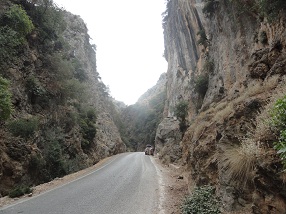 |
 |
 |
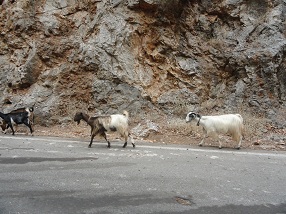 |
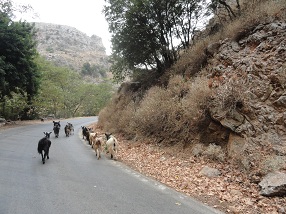 |
 |
 |
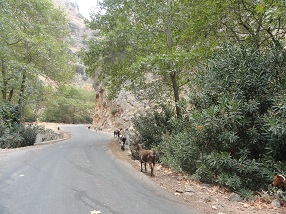 |
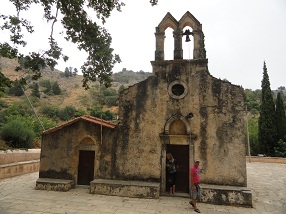 |
 |
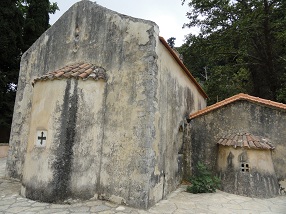 |
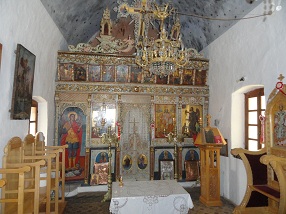 |
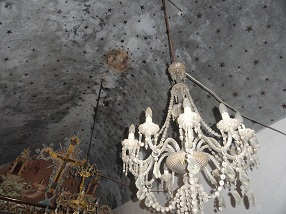 |
 |
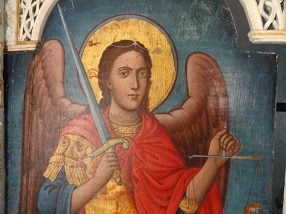 |
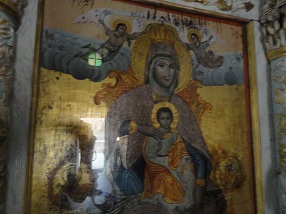 |
|
Theriso is a historic village, which used to be difficult to reach, because it was enclosed by the mountains and quite inaccesible. Because of its strategic position the village is interwoven with the the struggle for freedom and independence of the Cretan people from the Turkish invaders. Nowadays it is an interesting village to visit and it is a little bit on the tourist track, with two churches, two museums and several supposedly good taverns. |
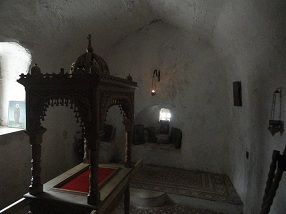 |
 |
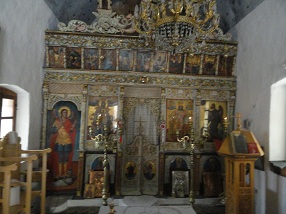 |
 |
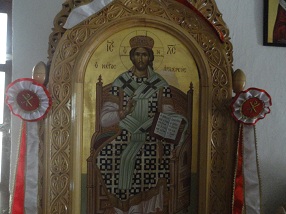 |
 |
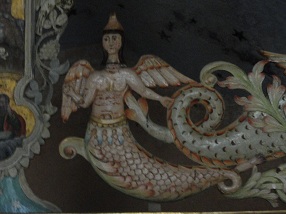 |
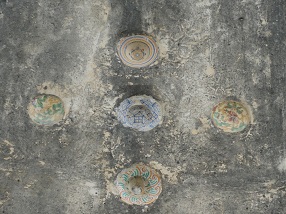 |
|
In 1886 the Turks burned down the village and many of the inhabitants fled to Kythira and Peloponnese, including the mother of Eleftherios Venizelos, who was born in Theriso. She took with her her two year old son, who would later become the most famous politician that Crete has ever known. In 1905 Venizelos had his base in Theriso and organised the Revolutionary Assembly in the village that ousted Prince George of Greece and precipitated the independence of Crete and its union with Greece. |
 |
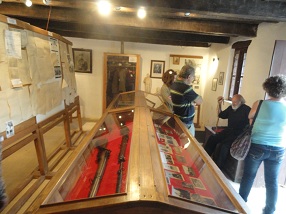 |
 |
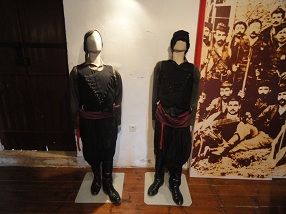 |
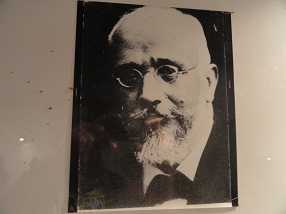 |
 |
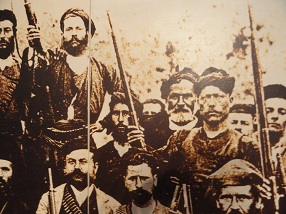 |
 |
|
Inside the village Eleftherios Venizelos now has his own museum in the house where his mother used to live. The entrance to this small museum is free. There is an older man in the museum who can give you a bit of information if you like. The museum covers two floors with mainly historic pictures and newspaper articles, clothing and articles from the period. This house has been preserved as a was declared a historical building. |
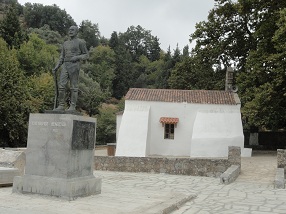 |
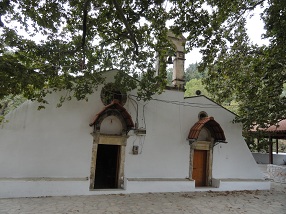 |
 |
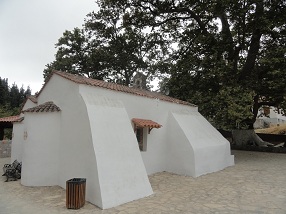 |
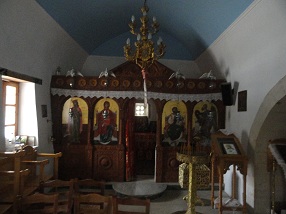 |
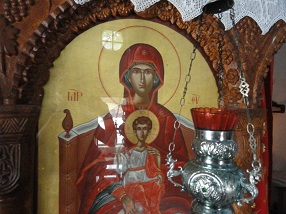 |
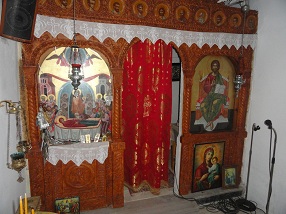 |
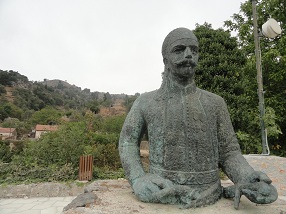 |
|
In Theriso you also find the Byzantine church of Agios Georgios and Agios Charalambos, which dates from 1555 and has painted stars on its ceiling. On the two sides of the altar-cross are wooden carved painted sharks and mermaids, and there are pretty icons in the church. The church consists of two parts: a small church that has been incorporated with the larger one. On one of the outside walls you can see a couple of plates that have been immured into the walls. In the time that the church was built it was the habbit that the people that worked on it masonned the plates they had eaten from into the wall of the church. On the square a little further down the road there is another attractive church net to an enormous tree, and there are memorials for Venizelos and for the people of the resistance. |
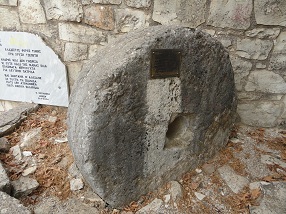 |
 |
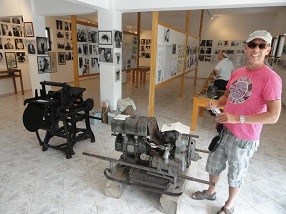 |
 |
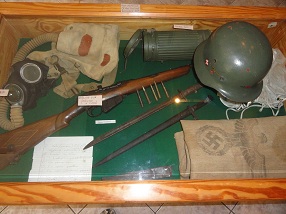 |
 |
 |
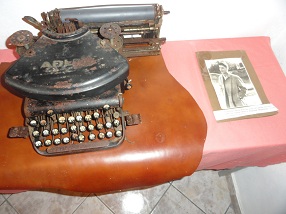 |
|
In the village there is also a Museum of National Resistance (entrance fee 1 euro in 2012) with an ehibition of pictures and accompanying eplanations, several weapons, helmets and objects that were used during World war II. Much was found in the surrounding area. In front of the museum there is a collection of defensive artillery (or cannons?) and there is a memorial with a millstone. Under this stone a woman from the village was murdered when the turks put her head underneath it. This woman refused to marry a Turkish man and this was her punishment. |
© Hans Huisman, David Halliday, https://www.angelfire.com/super2/greece/ 2019







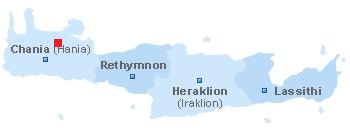 The small village of Theriso is located 14 kilometers south of Chania at an altitude of 580 meters, at the top of the Theriso gorge. The drive to the gorge is considered spectacular and is popular with Chania residents for the cooler temperatures and grill restaurants of the village.
The beautiful Theriso gorge can be seen from the road as it runs along the bed of the gorge for 6 kms, which can perhaps be scary to some people that are afraid of heights.
The Theriso Gorge is the only gorge in Crete through which you can drive the whole length.
The small village of Theriso is located 14 kilometers south of Chania at an altitude of 580 meters, at the top of the Theriso gorge. The drive to the gorge is considered spectacular and is popular with Chania residents for the cooler temperatures and grill restaurants of the village.
The beautiful Theriso gorge can be seen from the road as it runs along the bed of the gorge for 6 kms, which can perhaps be scary to some people that are afraid of heights.
The Theriso Gorge is the only gorge in Crete through which you can drive the whole length.